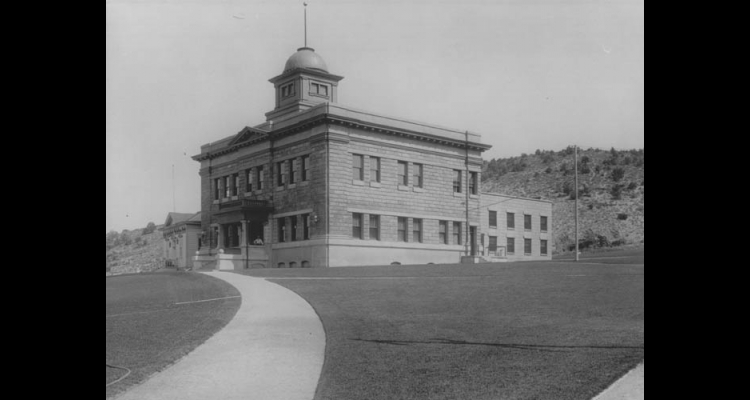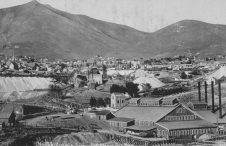White Pine County
White Pine County embraces 8,877 square miles in eastern Nevada, in the White Pine Range adjacent to the Utah border. The state legislature established the county in 1869 as a result of the mining boom at Hamilton, its first county seat. The boom ended after less than three years, but the community continued to serve as the center of government until the courthouse burned. Ely became the county seat in 1887.
The county did not prosper until the early twentieth century, when copper ore in the Robinson district (in which Ely is located) was developed. Mark Requa, son of a prominent Virginia City mine owner, was a primary early promoter of the region. The Guggenheim interests, with substantial holdings in Utah, gained control of much of the county's mining operation. Kennecott Copper Co. became a major producer.
For a half-century, White Pine was the most productive mining and smelting region in the state, with its pits at Ruth and Kimberley, and the large smelter at McGill. More than $1.0 billion in ore was mined and smelted between 1902 and 1981, when the operation closed.
White Pine County is served by three national highways, U.S. 6, 50, and 93. When the mines and smelter were active, the Northern Nevada Railroad connected Ely, McGill, and Ruth with the Southern Pacific Railroad to the north.
The high desert mountains, foothills, and valleys of the county offer many streams and habitats for wildlife and livestock. For more than a century, the rangelands have been coveted for their grazing possibilities for cattle and sheep. The highlands include the Snake Range, the Schell Creek Range, and the Diamond Mountains. There are seven peaks that rise above 10,000 feet in elevation. Great Basin National Park and Mt. Moriah Wilderness area lie entirely within White Pine County.
According to the 2000 census, White Pine County had a population of 9,264. In 2004, the Nevada State Demographer estimated a population of 8,966.





